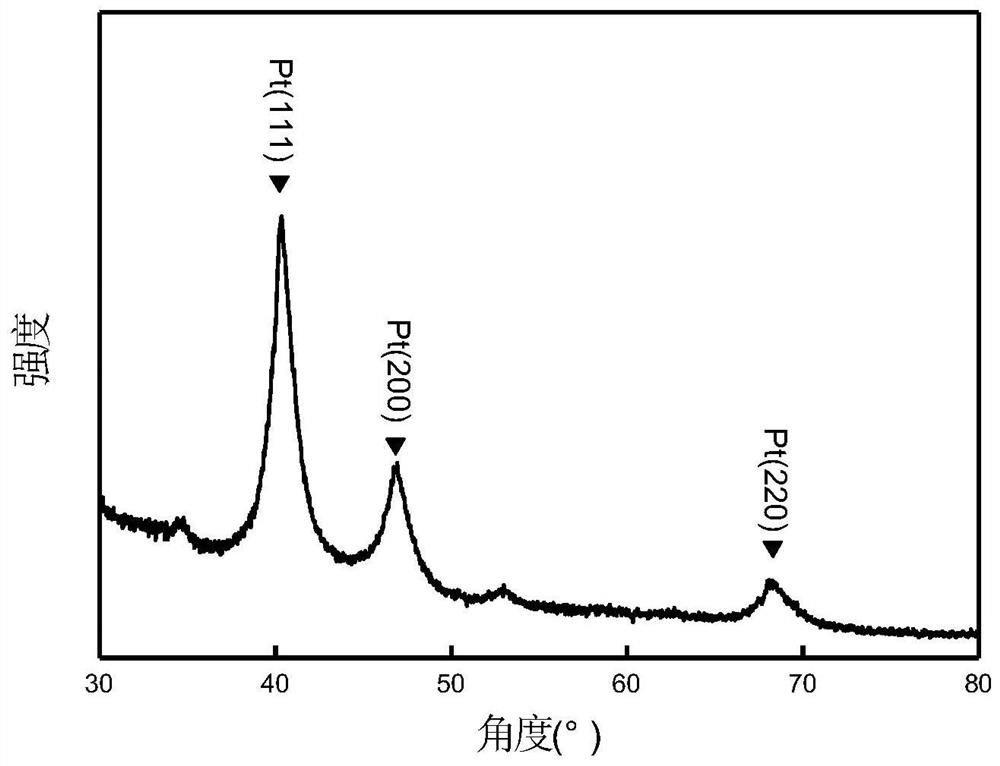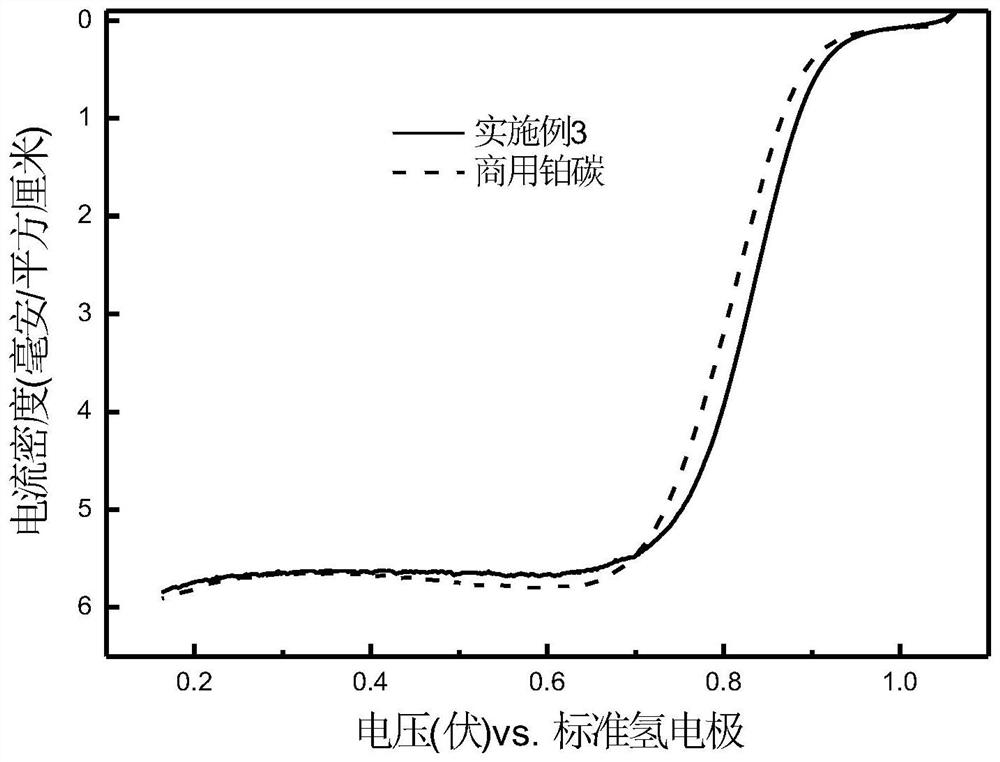A kind of preparation method of platinum-cobalt alloy catalyst
A platinum-cobalt alloy and catalyst technology, which is applied in the field of preparation of platinum-cobalt alloy catalysts, can solve problems such as potential safety hazards and unfavorable development of fuel cell catalysts, and achieve the effects of reducing difficulty, simple post-processing steps, and reducing use costs
- Summary
- Abstract
- Description
- Claims
- Application Information
AI Technical Summary
Problems solved by technology
Method used
Image
Examples
Embodiment 1
[0035] A preparation method of a platinum-cobalt alloy catalyst, comprising the following steps:
[0036] After mixing 4mL 0.1mol / L cobalt nitrate aqueous solution and 4mL 0.1mol / L citric acid monohydrate aqueous solution, stir until a sol is formed; then add 0.57g platinum-carbon catalyst with a platinum loading of 40% into the above-mentioned sol system, After stirring and ultrasonic dispersion, adjust the pH to 8 with ammonia water; heat in a metal bath at 60°C until a gel is formed; transfer the gel to a tube furnace, keep it warm at 500°C for 1 hour in a nitrogen atmosphere, and cool to room temperature naturally Add a sulfuric acid solution with a concentration of 0.5mol / L to pickle and soak; after pickling, filter with ultrapure water, and finally dry it in a blast drying oven at 50°C to obtain a black powder that is a platinum-cobalt alloy catalyst.
[0037] Carry out X-ray diffraction (X-Ray Diffraction, be called for short XRD) analysis to the platinum-cobalt alloy c...
Embodiment 2
[0039] A preparation method of a platinum-cobalt alloy catalyst, comprising the following steps:
[0040] After mixing 6 mL of 0.1 mol / L cobalt nitrate aqueous solution and 8 mL of 0.1 mol / L citric acid monohydrate aqueous solution, stir until a sol is formed; then add 0.85 g of a platinum-carbon catalyst with a platinum loading of 40% to the above sol system, After stirring and ultrasonic dispersion, adjust the pH to 11 with ammonia water; heat in a metal bath at 90°C until a gel is formed; transfer the gel to a tube furnace, keep it warm at 600°C for 2 hours in a nitrogen atmosphere, and cool to room temperature naturally Add a sulfuric acid solution with a concentration of 0.4mol / L for pickling and soaking; after pickling, filter with ultrapure water, and finally dry it in a blast drying oven at 70°C to obtain a black powder that is a platinum-cobalt alloy catalyst.
Embodiment 3
[0042] A preparation method of a platinum-cobalt alloy catalyst, comprising the following steps:
[0043] After mixing 5mL 0.1mol / L cobalt nitrate aqueous solution and 7mL 0.1mol / L citric acid monohydrate aqueous solution, stir until a sol is formed; then add 0.76g platinum-carbon catalyst with a platinum loading of 40% to the above sol system, After stirring and ultrasonic dispersion, adjust the pH to 10 with ammonia water; heat in a metal bath at 150°C to form a gel; transfer the gel to a tube furnace, keep it warm at 400°C for 1.5 hours in a nitrogen atmosphere, and cool naturally to room temperature Add a sulfuric acid solution with a concentration of 0.7mol / L for pickling and soaking; after pickling, filter with ultrapure water, and finally dry it in a blast drying oven at 60°C to obtain a black powder that is a platinum-cobalt alloy catalyst.
PUM
| Property | Measurement | Unit |
|---|---|---|
| particle diameter | aaaaa | aaaaa |
Abstract
Description
Claims
Application Information
 Login to View More
Login to View More - R&D
- Intellectual Property
- Life Sciences
- Materials
- Tech Scout
- Unparalleled Data Quality
- Higher Quality Content
- 60% Fewer Hallucinations
Browse by: Latest US Patents, China's latest patents, Technical Efficacy Thesaurus, Application Domain, Technology Topic, Popular Technical Reports.
© 2025 PatSnap. All rights reserved.Legal|Privacy policy|Modern Slavery Act Transparency Statement|Sitemap|About US| Contact US: help@patsnap.com



